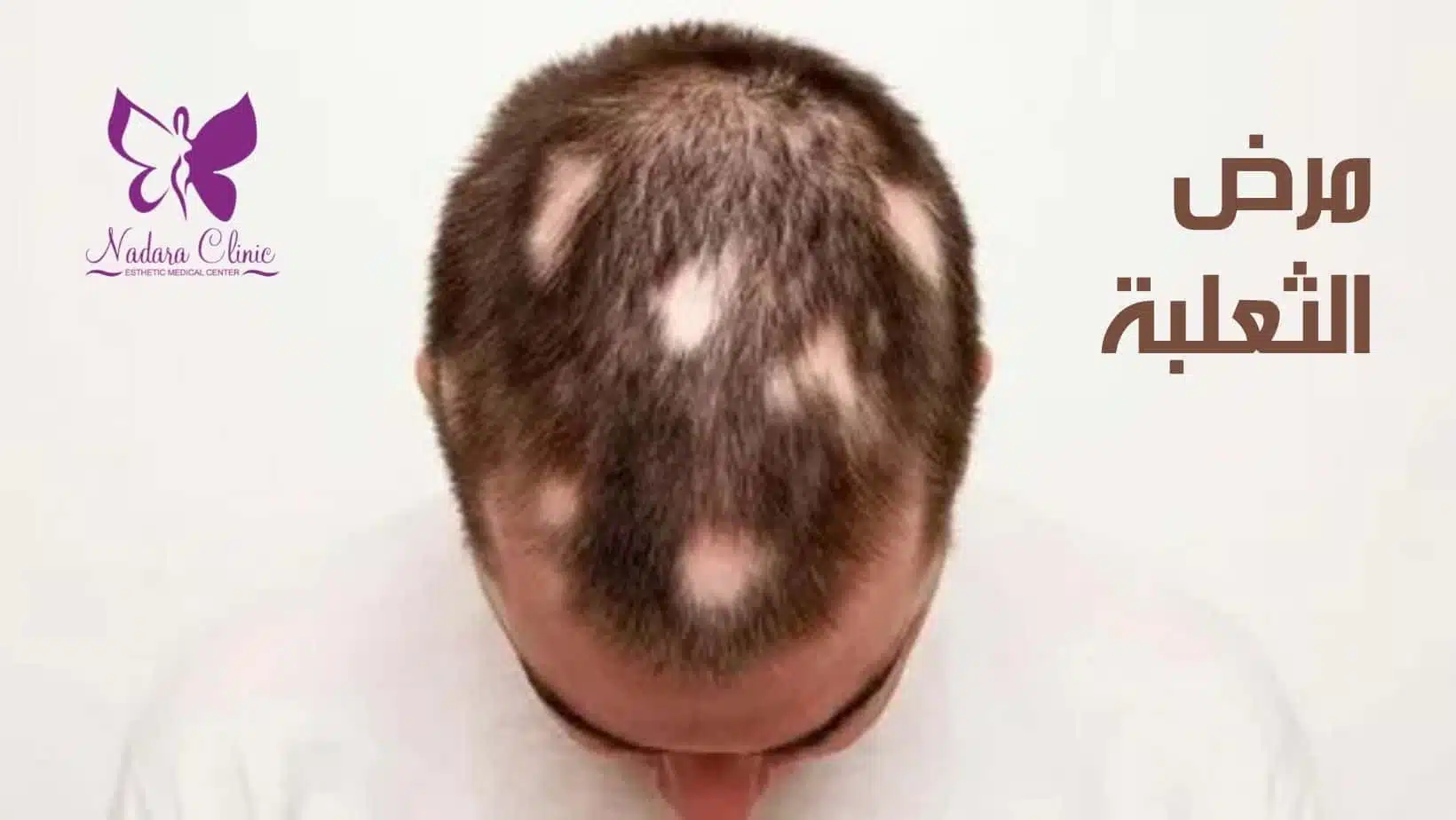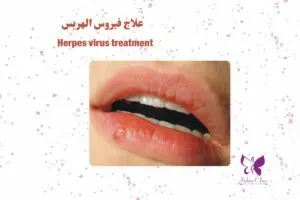And alopecia areata means hair loss, and this includes everything from common male pattern baldness to chemotherapy-induced baldness to patchy bald spots that appear blue in color to the complete loss of all hair on the scalp, face and body.
When patients come to the Freshness Center for Dermatology, Laser and Aesthetics in Hurghada in search of a treatment for alopecia, it is a condition that affects about two out of every 100 people, and causes symptoms that may fade over the course of the patient's life.
What is alopecia disease?
Alopecia areata is a disease that occurs when the immune system attacks hair follicles, causing hair loss. Hair follicles are the structures in the skin that make up hair. While hair can fall out from any part of the body, alopecia areata usually affects the head and face, with hair shedding in small, round patches, but in some cases, the hair loss is more widespread. Most people with the disease are healthy and have no other symptoms.
The course of alopecia areata varies from person to person, with some people having bouts of hair loss their entire lives, while others only having one. Recovery is also unpredictable, with some people having complete hair loss and not others. There is no cure for alopecia areata, but there are treatments that help hair grow more quickly, and there are also treatments to help people deal with hair loss.
What are the types of alopecia?
There are three main types of alopecia areata:
- Alopecia areata. This type, the most common, occurs in one or more coin-sized spots on the scalp or other parts of the body.
- alopecia totalis; People with this type eventually lose all their scalp hair.
- Alopecia universalis, this type is rare, in which complete or almost complete loss of hair occurs on the scalp, face and the rest of the body.
Who gets alopecia?
Anyone can suffer from alopecia areata, men and women are affected equally, and it affects all ethnic groups equally. Onset can be at any age, but most people get it in their teens, twenties, or thirties, and when it occurs in children younger than 10, it tends to be more widespread and advanced.
If you have a family member with alopecia areata, you may be more likely to develop it, but for many people, there is no family history. Scientists have linked a number of genes to alopecia, suggesting that genes play a role in the disease, and many of the genes they discovered are important for the functioning of the immune system.
People with certain autoimmune diseases, such as psoriasis, thyroid disease, or vitiligo, are more likely to develop alopecia areata, as are those with allergies. Emotional stress or illness can cause alopecia areata in at-risk people, but in most cases, there's no clear cause.
Alopecia symptoms
Alopecia affects mainly the hair, but in some cases, changes in the nails also occur, and people with the disease are usually healthy and have no other symptoms.
hair changes
Alopecia areata begins with a sudden loss of circular or oval patches of hair on the scalp, but any part of the body may be affected, such as the men's beard, eyebrows, or eyelashes area. There is no sign of rash, redness, or scarring on the bare spots. But some people say they feel stinging, burning or itching on patches of skin right before the hair loss.
When a bare patch develops, it is difficult to predict what will happen next. Possibilities include:
- Hair grows back within a few months. It may look white or gray at first, but may regain its natural color over time.
- Additional exposed patches develop, and sometimes, hair grows back in the first patch while new bare patches form.
- Small patches join to form larger groups, and in rare cases, hair is eventually lost from the entire scalp, which is called alopecia totalis.
- There is progression to complete loss of body hair, a type of disease called alopecia universalis, this is rare.
- In most cases, hair grows back, but subsequent episodes of hair loss may occur.
- Hair tends to grow completely on its own in people who suffer from: hair loss with little intensity, the onset of the disease at a later age, no change in the nails, and no family history of the disease.
nail changes
Nail changes such as bumps and pits occur in some people, especially those with more hair loss.
What are the causes of alopecia?
Alopecia occurs when white blood cells attack hair follicles, causing them to shrink and their production to be greatly slowed. It is not known exactly why a person's immune system attacks hair follicles in this way.
While doctors are not sure what causes these changes to occur. But some say that genes may be involved, it is possible that alopecia areata affects a person who has a close family member with the same disease.
Other research has shown that many people with a family history of alopecia areata also have a personal or family history of other autoimmune disorders, such as atopy, a disorder in which hypersensitivity, thyroiditis, and vitiligo occur.
Despite what many people think, there is little scientific evidence to support the view that alopecia areata is caused by stress. Extreme stresses can trigger this condition, but the latest research suggests a genetic cause.
The cause of hair loss is believed to be a combination of the following:
- aging.
- Change in hormones.
- The disease that leads to hair loss, is called telogen effluvium.
- A family history of baldness.
- burns;
- infection.
- Untreated ringworm of the scalp.
- Iron or protein deficiency.
- Excessive intake of vitamin A.
- Rapid weight loss.
- Certain medications, such as chemotherapy for cancer.
- Certain medical conditions, such as lupus.
In general, the earlier the hair loss begins, the more severe the baldness.
You may be interested in: Pediatric Dermatology"
Alopecia Diagnosis
Just by looking at the extent of hair loss and examining some hair samples with a microscope, a doctor is able to diagnose alopecia areata by looking for signs and symptoms of alopecia. Your doctor may also perform a scalp biopsy to rule out other conditions that cause hair loss, including fungal infections, such as tinea capitis. During a scalp biopsy, your doctor will remove a small piece of skin from your scalp for analysis.
Blood tests may be done if an autoimmune disorder is suspected. The specific blood test that is performed depends on the specific disorder the doctor suspects. However, your doctor will likely test one or more abnormal antibody tests. If you find antibodies in your blood, it usually means you have an autoimmune disorder.
Other blood tests that may help rule out other conditions include:
- Erythrocyte sedimentation rate.
- iron levels.
- Antinuclear antibody test.
- Thyroid hormones.
- C-reactive protein.
- Free and full testosterone.
- Follicle-stimulating hormone and luteinizing hormone.
You may be interested in: Cracked skin and its causes"
Alopecia areata treatment
There is not yet a known cure for alopecia, but there are methods you can try that may have the ability to slow the process of hair loss in the future, or help hair regrow faster. It's hard to predict, which means you may have to experiment with something that works for you, and for some people, hair loss can worsen, even during treatment.
medical treatments
topical treatment
You can rub the treatment into the scalp to help stimulate hair growth. A number of medications are available, both over-the-counter and by prescription:
- Minoxidil (Rogaine).
It can be purchased without a doctor's prescription, and is applied twice a day to the scalp, beard and eyebrows, as it is usually safe, but it may take a year for results to appear.
- Anthralin (Drytho-Scalp).
Anthralin is a drug that stimulates the skin in order to stimulate hair growth.
- Corticosteroid creams.
Corticosteroid creams, such as clobetasol (Emboise), foams, lotions and ointments that reduce inflammation in hair follicles.
- Topical immunotherapy.
A substance such as diphencyprone is applied to the skin to produce an allergic rash. The rash can result in new hair regrowth within six months, but you will have to continue treatment to keep the hair growing.
drug injection
Steroid injections are a well-known alternative for treating mild patchy alopecia areata to help hair regrow again and get rid of bald spots. Small needles inject the steroid into the bare skin of the affected areas.
oral therapy
Corticosteroids are sometimes used to treat severe hair loss, but side effects can occur, so talk to your doctor about this option.
Oral immunosuppressants, such as methotrexate and cyclosporine, are another option you can try. They work by decreasing the immune system's response, but they cannot be taken for a long period of time due to the risk of side effects, such as high blood pressure, liver damage and problems Kidney, increased risk of severe infection and the occurrence of lymphoma.
light therapy
Light therapy is called photochemotherapy. It's a type of radiation therapy that uses a combination of an oral medication called psoralen and ultraviolet light.
hair restoration surgery
Interest in hair replacement has increased over the past several years. There are a number of hair replacement techniques available, but hair replacement surgery cannot help people with complete baldness. Candidates for hair replacement must have healthy hair growth on the back and sides of the head, and the hair on the back and sides of the head will serve as the donor areas for hair, from which the follicles will be taken.
There are 4 different basic types of hair replacement methods, including the following:
- Hair Transplant.
during hair transplant process, the surgeon removes small pieces of hair-bearing scalp from the back or sides of the head to use as grafts. These follicles are then moved to the bald area.
- Scalp tissue expansion.
In the scalp tissue expansion procedure, a device called a tissue expander is placed under the hair-bearing area, which is next to the balding area. After several weeks, the tissue expander causes new skin cells to grow in the skin, and then another operation is needed to place the newly expanded skin over the adjacent bald spot.
- flap surgery.
Flap surgery is ideal for covering large areas of baldness. During this procedure, part of the balding area is removed, and a flap of hair-bearing skin is placed over the balding area, while still attached at one end to the original blood supply.
- Scalp reduction.
Scalp reduction is performed to cover the balding areas on the top and back of the head. It first involves removing the bald scalp, then the hair-bearing parts of the scalp are pulled together to fill in the balding area. This can be done alone or with a hair transplant.
Alopecia natural treatment
Some people with alopecia areata prefer alternative methods of treating the condition, which may include:
- Acupressure.
- Microneedle.
- Probiotics.
- Low level laser therapy.
- vitamins, such as zinc andbiotin.
- Aloe vera drinks and topical gels.
- Rub onion juice on the scalp.
- Essential oils, such as lavender, tea tree oil, peppermint, and rosemary.
- Other oils, such as coconut, castor, olive, and jojoba oils.
- The anti-inflammatory diet, also called the autoimmune protocol, mainly includes meat and vegetables
- Complementary herbs, such as ginseng, hibiscus and green tea.
You may be interested in: Freckle marks and their treatment"
How to prevent alopecia
An autoimmune disorder may be the result of some factors, including family history, other autoimmune problems, and even other skin problems. But not everyone who suffers from one or some of these factors will develop the disease, which is why prevention is not yet affordable.
You may be interested in: lichen planus"
Oftentimes, the dermatologist - Dr. Amani Al-Tawabti - at the Freshness Center for Dermatology, Laser and Aesthetics in Hurghada, prescribes patients suffering from alopecia areata many different treatment methods that are appropriate for their health condition while ensuring the least possible complications.







